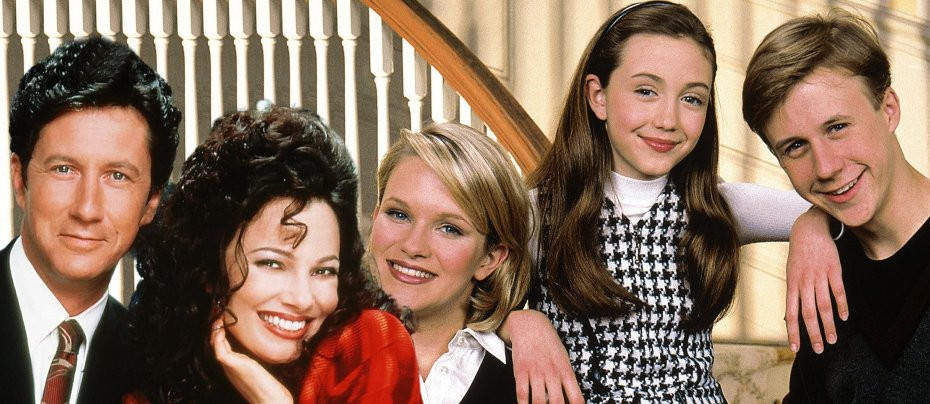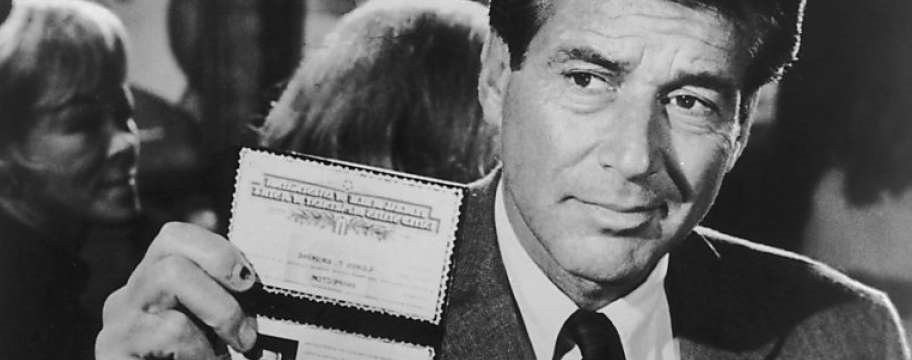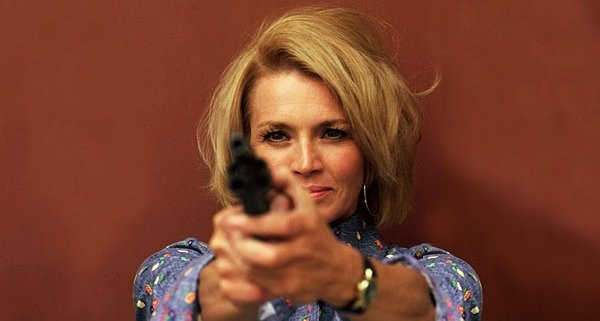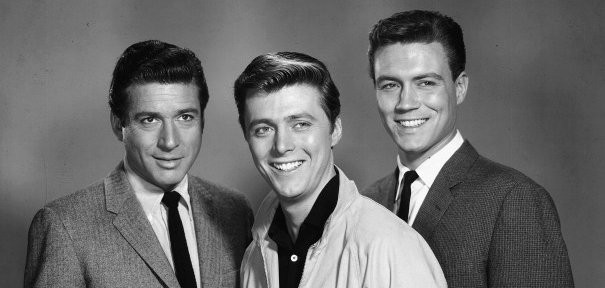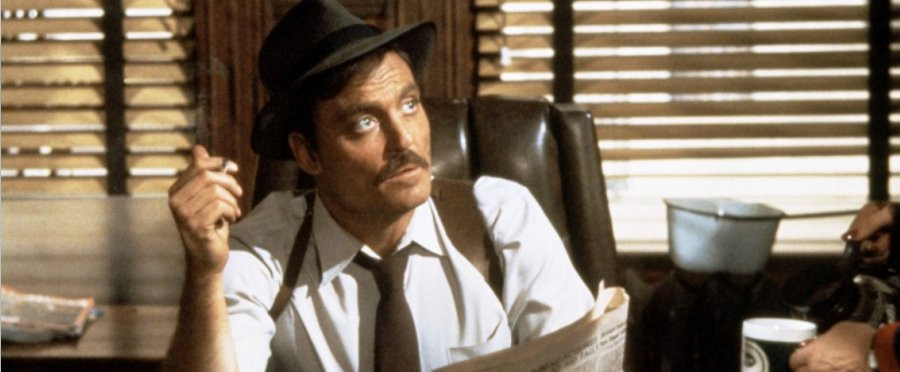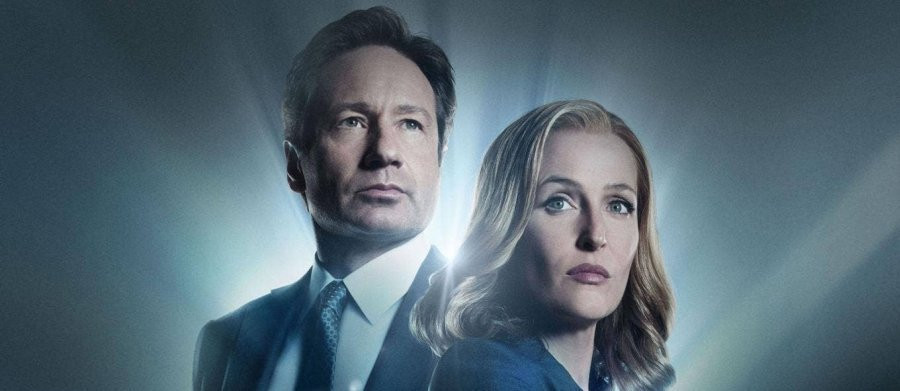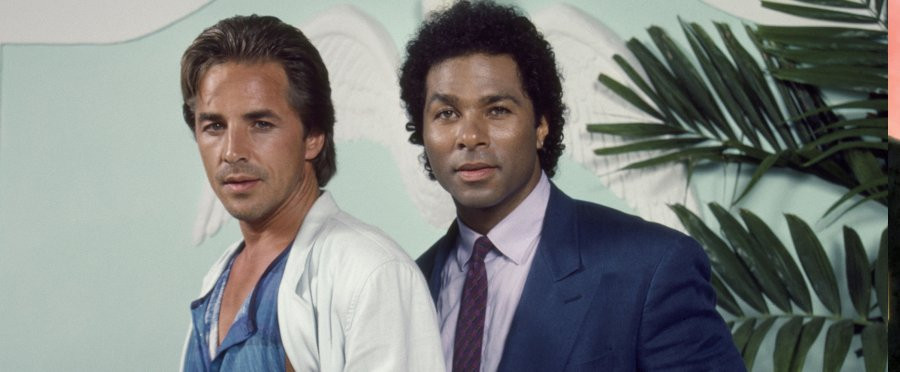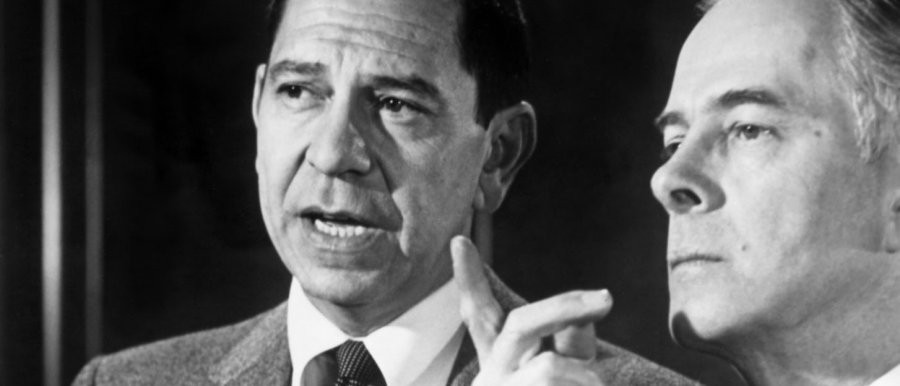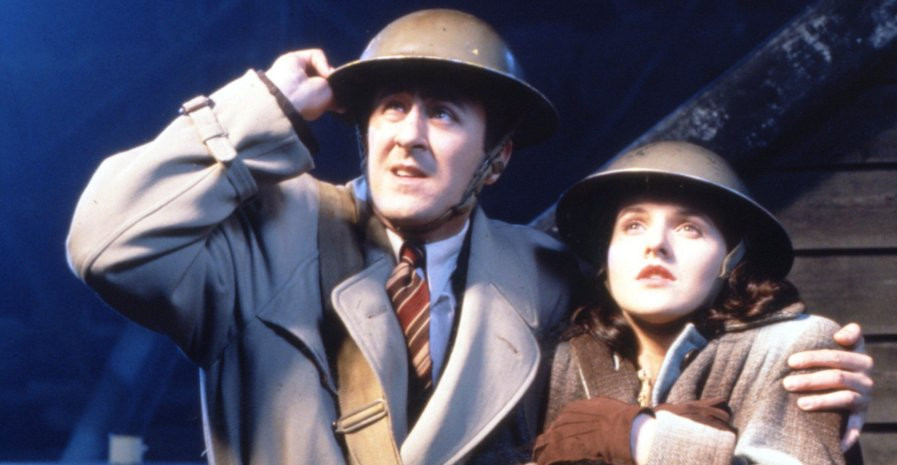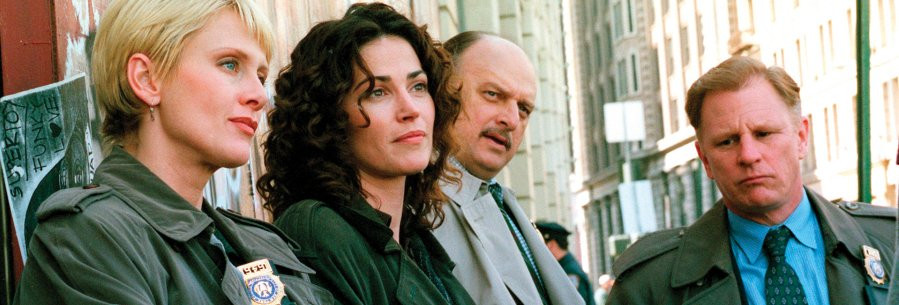
NYPD Blue
1993 - United StatesNYPD Blue was the first real attempt by a US broadcast network to create an adult drama that could compete with the increasingly violent, frank and sexually explicit series appearing on cable television in the 1990s. If the show had relied solely on shock value, Blue would probably have died a quick death. Instead, co-creators Steven Bochco and David Milch built a strong foundation of story and character for this police drama set in New York City’s Manhattan district. The result was a consistently good series that ran for 12 seasons, making it the longest-running hour-long drama in ABC’s history.
Creating ground-breaking television was nothing new for Bochco, who co-created Hill Street Blues in the early 1980s; it’s still considered a milestone in police drama. Hill Street was daring for its time in its unflinching, gritty look and feel, along with its treatment of sex and violence. But Bochco still had to fight NBC censors over the show’s content, coming up with alternative phrases for common four-letter words. Bochco and the NBC censors continued sparring over his even more successful L.A. Law in the late 1980s. By the early 1990s, he had a multi-series deal with ABC, which spawned one success (Doogie Howser, M.D.) and several flops, including the infamous musical police drama Cop Rock and a series about divorce lawyers called Civil Wars. New dramas weren’t burning up the ratings charts at the time, and Bochco thought he knew why. He felt television viewers were looking for more thrills (read: sex and violence) than the broadcast networks could offer without facing the wrath of the Federal Communications Commission.
For his next drama—which would be a police procedural—Bochco wanted to use real four-letter words that the networks would never have allowed. He also wanted to show some nudity (though full-frontal shots would still be barred), and unlike Hill Street, he wanted to focus more on a small group of characters rather than a large ensemble. Bochco, Milch and ABC agreed on a “bible” for the show, specifying what would be allowed. Later, Bochco would describe Blue as television’s first “R-rated” drama. Milch, a former Hill Street producer, fleshed out the characters, situations and cases. He encountered real-life New York detective Bill Clark, who provided Milch with a number of true stories that were incorporated into the show; Clark later retired from the department and became a producer on NYPD Blue.
The next step was casting. For the key role of Andy Sipowicz, Bochco turned to Dennis Franz, the character actor who had played not one but two cops on Hill Street—including the role of quasi-sleazeball Norman Buntz, who was given his own short-lived series, Beverly Hills Buntz, in the late 1980s. By the time he was approached for Blue, Franz had played 27 fictional cops and wasn’t looking to portray another one. But Franz respected both Bochco and Milch and agreed to do the show. Franz had second thoughts after reading the pilot script; he told Entertainment Weekly, “When I finally read it, my main problem with the character was, who was going to give a damn about Sipowicz? He was a loose cannon, a womaniser, a drunk, a racist, and an atheist. I got shot, like, five or six times in the first episode; who’s gonna care if I lived or died? Steven and David said, ‘You will find a way to make this character redeemable.’”
To play his world-weary partner, John Kelly, Bochco again looked to his Hill Street days and hired David Caruso, who had played a gang leader in several episodes. Kelly, as portrayed by Caruso, was an unusual television sex symbol with his red hair and pale complexion. But he was the perfect counterpart to the boozing, womanising, bigoted Sipowicz; Kelly was the sympathetic man who cared about everyone and was a good lover. Women (on-screen and off) soon swooned over Kelly. Also hired in that first season was Cop Rock veteran James McDaniel as the squad’s African-American commander, Lt. Arthur Fancy; rookie Officer James Martinez (Nicholas Turturro); and Gordon Clapp as Detective Greg Medavoy, who joined midway through Season One. Clapp and Franz would be the only original cast members still on board when Blue ended its run.
Proving that even supporting players on a Bochco show could go on to stardom, the first season included such characters as Laura Hughes Kelly, the estranged wife of John Kelly. Amy Brenneman played Officer Janice Licalsi (John Kelly’s love interest) for nearly two seasons; she would later star in her own drama series, Judging Amy. One of Laura Kelly’s neighbours was known only as “4-B”; he carried a gun and was later shot to death. A pre-Friends David Schwimmer played “4-B”. The squad’s first visible secretary/receptionist, Donna Abandando, was played by the beautiful Gail O’Grady; she left the 15th after a brief affair with Medavoy and went on to star in series such as American Dreams.
Even before NYPD Blue premiered on 21 September 1993, conservative groups were targeting the show. They denounced the sex and language (though the show was relatively violence-free for a police drama). Long-time anti-obscenity campaigner Reverend Donald Wildmon, of the American Family Association, launched a boycott against the sponsors. Even worse, about 25% of ABC’s 200-plus affiliates refused to carry the premiere. ABC fought back by airing a disclaimer before each episode: “This police drama contains strong language and nudity. Viewer discretion advised.” The network also offered Blue to independent stations and Fox affiliates in cities where the ABC affiliate refused to carry the show, but had to reduce how much it could charge for advertising time because of the controversy.
Ironically, all the publicity over Blue’s content did what Wildmon probably feared—the premiere drew an audience of 23 million, while critics praised the show highly. As the weeks passed, viewers realised that NYPD Blue was a strong, well-crafted and superbly acted drama that happened to offer more nudity and stronger language than other network shows. Wildmon’s boycott eventually fizzled out; Blue finished its first season tied for 18th place. ABC affiliates that had initially refused to air the show changed their minds. Critics also acknowledged that Dennis Franz truly found a way to portray Sipowicz. He brought a sense of worth and depth to a seemingly irredeemable man. His craft elevated both Andy and the series to dramatic heights. Indeed, it was Franz who set the tone for the series’ run; he was its heart and soul, and he turned Blue into true television gold. His now-famous scenes interrogating suspects—or “tuning them up” in Sipowicz’s words—were powerful as Andy eventually wore down the guilty party.
Caruso was even more popular, despite reports that he was difficult to work with on set and was a perfectionist. Franz later described his former co-star as “a hands-on kind of guy who had something to say in his performances, and he wanted his voice to be heard.” A number of filmmakers wanted a piece of Caruso; movie offers came his way. Before the second season of Blue began, Caruso made a number of demands, including cutting back his appearances so he could also work on films. Bochco and Milch refused; after a much-publicised feud, the producers released Caruso, and he left NYPD Blue after the first few episodes of Season Two. But Caruso’s film career didn’t pan out well; his movies were neither critical favourites nor commercial successes. Caruso returned to television in the short-lived legal drama Michael Hayes in the late 1990s but found TV success again with his lead role on CSI: Miami.
Bochco wisely decided not to replace Caruso with another actor of similar temperament. Reaching back into his casting files, he approached Jimmy Smits, who had played attorney Victor Sifuentes for five seasons on L.A. Law. Smits, not Caruso, was originally offered the role of Sipowicz’s partner but declined due to other commitments. After reading the script that would introduce him to the show, Smits agreed to join. As the handsome, intense Bobby Simone, Smits brought a new dimension to Blue; he eventually won over his new partner. The proof came during the second season, when Simone and Sipowicz sat in their car on a stakeout; Simone began singing the doo-wop classic Duke of Earl, and Sipowicz joined in, bonding the two in the eyes of the audience. Simone was also a more grounded character; his previous wife had died of cancer, and there was a quiet restlessness beneath the surface that made Simone intriguing—and rather sexy.
Viewers quickly accepted Smits' addition; NYPD Blue became the seventh most-popular series of the 1994–95 season. Also during Season Two, Sipowicz began attending Alcoholics Anonymous meetings to control his drinking and began a relationship with Assistant District Attorney Sylvia Costas (Sharon Lawrence), a woman he had called a “prissy little bitch” in the pilot. The two eventually married and had a son, Theo, before Costas was tragically gunned down by an unstable man during a court trial.
John Irvin (Bill Brochtrup) stepped in as receptionist for Donna temporarily before he left the 15th for another NYPD position. One of the more credible gay characters on US television at the time, Irvin served as a physical and emotional sounding board for the squad members. He also managed to bond with Sipowicz and became his babysitter despite Andy’s initial homophobia.
After five seasons as Simone, Smits decided to leave NYPD Blue when his contract ended—partly due to co-creator David Milch’s infamous last-minute script changes, which drove Smits to frustration. In November 1998, shortly after Simone's marriage to Diane Russell, he came down with a cold that was later diagnosed as a fatal heart condition. His death shocked both the viewers and members of the 15th squad. Critics predicted that without Smits, Blue was on borrowed time—but not quite yet.
Producers brought in another actor with a completely different energy: former child actor and Silver Spoons star Rick Schroder joined the cast as Andy’s newest partner, Detective Danny Sorenson—a good-looking young former narcotics cop with his own inner demons. Sipowicz, reluctantly, became his mentor. Though never as popular as Smits, Schroder surprised critics with a strong performance opposite one of prime time’s best actors. (He also had a brief affair with the now-widowed Diane Russell, who left the show in 2001 for the short-lived Bochco-produced legal drama Philly.)
As the cases continued, new characters joined the squad, including Medavoy’s new partner, the tall, charismatic African-American Detective Baldwin Jones (Henry Simmons), who started a relationship with Sylvia Costas’ replacement, ADA Valerie Haywood (Garcelle Beauvais-Nilon). That same year, Lieutenant Fancy departed, replaced by new squad commander Tony Rodriguez (Esai Morales). Also joining were Detectives Connie McDowell (Charlotte Ross) and Rita Ortiz (Jacqueline Obradors). Around this time, co-creator David Milch and Rick Schroder both exited the show. (Sorenson was killed off while working undercover at a strip club.) Fortunately, the team rallied once again; another former sitcom star—Mark-Paul Gosselaar of Saved By The Bell—was cast as Andy’s fourth and final partner, John Clark.
Following the 11 September 2001 terrorist attacks, the show shifted tone slightly. It was decided that Sipowicz had endured enough personal tragedy. The writers slowly moved him closer to Connie, and the two began a relationship, eventually having a baby despite a significant age gap. Sipowicz had a total of three children—Andy Jr. (Michael DeLuise), who reconciled with his estranged father before being killed in a bar robbery; Theo, portrayed authentically (and not precociously) by young actor Austin Majors; and Matthew, the baby born to Andy and Connie. (Connie also gained custody of her infant niece Michelle, giving the couple three children.)
After 11 seasons, the end was in sight. By this point, Blue’s weekly audience was less than half the 27 million who had tuned in during Season Two. But Bochco insisted the show wouldn’t end until Franz decided the time was right. Still, ABC was making noises about cancellation, so both sides agreed that the 2004–05 season would be the last. Blue remained a solid drama, but it had been eclipsed by new and more daring shows like The Sopranos, Deadwood, The West Wing (early seasons), and a wave of Law & Order and CSI spin-offs.
In the final season, John Clark spiralled into heavy drinking and sleeping with prostitutes—echoing the same behaviour that Sipowicz had displayed in the pilot. On top of that, Rodriguez had left the squad, and his replacement, Lieutenant Thomas Bale (Gordon Currie), alienated the team with his rigid and inflexible management. The final episode, which aired on 1 March 2005, featured no dramatic hugs, no shootings, and no grand farewell—just another day in the life of the 15th squad. It drew 16 million viewers, the show’s highest rating in three years, despite stiff competition from CBS’s The Amazing Race and NBC’s Law & Order: SVU.
Ironically, Blue’s departure coincided with a period when the FCC began cracking down hard on perceived obscenity on network television. But NYPD Blue had already proven that a mature, adult-themed drama could not only survive—but thrive—on a broadcast network. Even more ironically, cable shows like David Milch’s Deadwood and the gritty The Shield would go far beyond anything Blue could offer in terms of sex, violence and language.
The moral? Good writing and exceptional acting are still the keys to success. That’s why NYPD Blue earned its stripes as one of the best dramas in American television history.
TRIVIA
CENSORED!
In one famed episode, two of the show’s regulars came upon an apartment shared by a nearly naked man and a sheep.
Network censors allowed the sheep but fought over the colour of the bow worn by the animal. Go figure.
NOT CENSORED!
Dennis Franz’s bare behind was seen in one episode when he showered with Sylvia Costas.
He later admitted that it was “a little embarrassing to watch it with my daughter, but nevertheless it was one of the most memorable things on the show”
CHARACTERS
Bochco and Milch had planned to kill Sipowicz off after the pilot; fortunately, they had a change of heart.
Laura Hughes Kelly was played by Sherry Stringfield, who left after the first season to co-star on the even more-popular drama ER.
Simone found romance in the form of Detective Diane Russell (Kim Delaney), who joined the 15th squad; the two eventually married. Even young detective Martinez found love in the form of precinct receptionist Gina Colon (Lourdes Benedicto) before the two wed and Turturro left the series in 2000.
Gina was one of several receptionists who followed Donna Abandano.
The one who stayed the longest was actually a gay man: John Irwin (Bill Brochtrup). He stepped in for Donna temporarily before he left the 15th for another job in the NYPD.
Brochtrup appeared on a few failed Bochco series before he was brought back to “Blue” and stayed for the rest of the run.
One of the more credible gay characters on a US television series, Irwin was in part a physical reactor to the various cases and personal woes of the other squad members; he also managed to bond with Sipowicz and become his babysitter despite Sipowitz’s initial homophobia.
Seen this show? How do you rate it?
Seen this show? How do you rate it?
Published on January 15th, 2019. Written by Mike Spadoni (April 2005) for Television Heaven.


